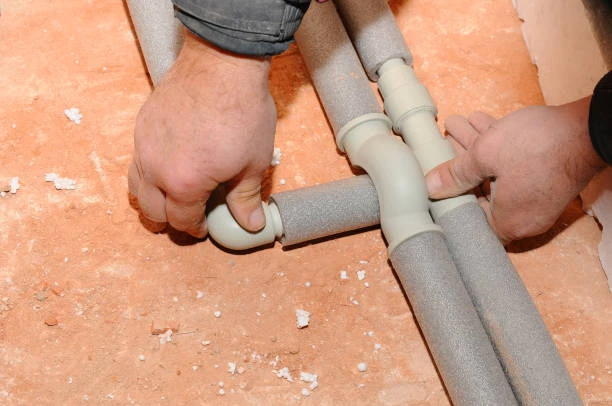Introduction
UPVC compression fittings are a cornerstone of modern plumbing and fluid systems. Their durability and versatility make them essential in various applications, from domestic water supply to industrial processes. However, ensuring their reliability depends heavily on adherence to standards like BS EN 1401. Test certificates provide evidence of compliance, assuring users of the product’s quality and safety.
What Are UPVC Compression Fittings?
Definition and Purpose
UPVC (Unplasticized Polyvinyl Chloride) compression fittings connect pipes using a compression mechanism. These fittings eliminate the need for adhesives or welding, offering a convenient and reliable solution for plumbing systems.
Applications Across Industries
UPVC compression fittings are widely used in residential plumbing, agricultural irrigation, and chemical fluid transport systems.
Understanding BS EN 1401 Standards
Overview of the Standard
BS EN 1401 sets the guidelines for thermoplastic pipes and fittings, focusing on underground drainage systems. This standard ensures consistent quality and performance.
Importance in Ensuring Product Quality
Adherence to BS EN 1401 guarantees that UPVC compression fitting meet specific requirements for strength, durability, and environmental resistance.
Key Features of UPVC Compression Fittings
Durability and Strength
UPVC compression fitting can withstand high pressure and impact without deforming or breaking.
Resistance to Corrosion
These fittings resist chemical corrosion, making them suitable for harsh environments.
Ease of Installation
Their design simplifies the installation process, reducing labor time and costs.
Why Test Certificates Are Essential
Verification of Compliance
Test certificates confirm that UPVC compression fittings meet international standards like BS EN 1401.
Assurance of Safety and Reliability
Certified products undergo rigorous testing, ensuring they are safe for use in critical applications.
Components Verified in a Test Certificate
Material Composition
Certificates detail the chemical composition of the UPVC, ensuring it meets quality benchmarks.
Dimensional Accuracy
Precision in dimensions is crucial for compatibility and leak-proof connections.
Pressure and Thermal Resistance
The ability to withstand varying pressures and temperatures is verified through testing.
The Role of LPO Ref in Certification
Explanation of LPO Ref
LPO Ref is a unique reference number assigned during the certification process, enabling traceability of the product.
Its Role in Traceability
This reference ensures that every certified fitting can be traced back to its production batch and testing details.
Testing Procedures for UPVC Compression Fittings
Laboratory Analysis
Tests are conducted under controlled conditions to evaluate material strength and durability.
Field Testing
Real-world conditions are simulated to ensure the fittings perform as expected in practical applications.
Common Tests Conducted Under BS EN 1401
Hydrostatic Pressure Test
This test ensures that the fitting can handle high water pressure without leaks or failures.
Impact Resistance Test
Evaluates the fitting’s ability to resist mechanical impacts during installation and use.
Dimensional Inspection
Ensures that the dimensions comply with BS EN 1401 standards for seamless compatibility.
Benefits of Using Certified UPVC Compression Fittings
Increased Safety
Certified fittings reduce the risk of failures, enhancing overall system safety.
Longer Lifespan
Products meeting BS EN 1401 standards are more durable, reducing the need for frequent replacements.
How to Verify a Test Certificate
Checking for Standard Compliance
Ensure the certificate explicitly mentions compliance with BS EN 1401.
Verifying Manufacturer Credentials
Choose products from reputable manufacturers with a proven track record.
Challenges in Obtaining Certification
Stringent Testing Requirements
The rigorous standards can be challenging for manufacturers to meet consistently.
Cost and Time Investment
Obtaining certification involves significant financial and time commitments, impacting production timelines.

Market Trends in Certified UPVC Fittings
Growing Demand for Quality Assurance
The need for reliable plumbing systems drives the demand for certified fittings.
Technological Advancements in Testing
Modern testing methods ensure faster and more accurate certification processes.
Tips for Selecting Certified UPVC Compression Fittings
Reviewing Documentation
Always request the test certificate and verify its authenticity.
Ensuring Compatibility with Applications
Check that the fittings are suitable for the intended pressure, temperature, and fluid type.
Conclusion
UPVC compression fittings certified to BS EN 1401 offer unmatched reliability and safety. These test certificates serve as a benchmark for quality, ensuring that the fittings meet rigorous standards. By understanding the significance of certification and knowing how to verify it, users can confidently choose the best fittings for their applications.
FAQs
1. What does BS EN 1401 certification mean for UPVC compression fittings?
It ensures the fittings meet European standards for underground drainage systems, guaranteeing quality and performance.
2. Why are test certificates important for UPVC compression fittings?
They confirm compliance with safety and quality standards, providing assurance to users.
3. How can I verify the authenticity of a test certificate?
Check for details like the LPO Ref number, manufacturer credentials, and standard compliance.
4. What are the common tests conducted for UPVC compression fittings?
Tests include hydrostatic pressure tests, impact resistance tests, and dimensional inspections.
5. Are certified UPVC compression fittings more expensive?
While they may cost slightly more, the long-term benefits of safety and durability outweigh the initial expense.